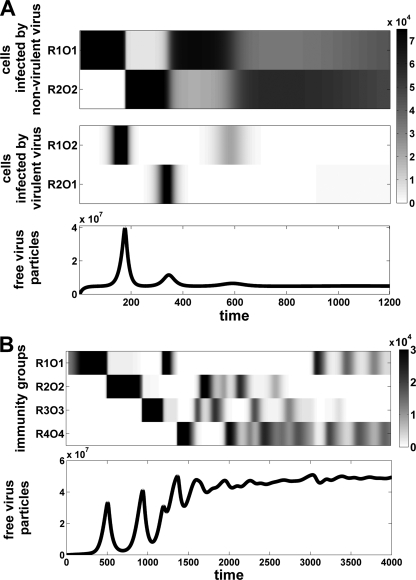FIG. 3.
Generation and maintenance of immunity groups. (A) Simulation for two immunity groups in the operator reversion scenario. Repeated invasions lead to cycling and coexistence between two immunity groups (R1O1 and R2O2) driven by the appearance of ultravirulent operator mutations (R1O2 and R2O1). Invasions of ultravirulent mutants are marked by a steep increase of free viral particles. (B) New operator mutations drive the repeated repressor compensation and invasion of immunity groups. This invasion phase is followed by a fluctuation phase, in which previous immunity groups reappear. Diversification of immunity groups leads to an overall increase in virulence and free viral particles. We simulated equations in the Appendix (see “Invasion condition”), extended for 2 and 4 immunity groups, using NDSolve in the Mathematica 7.0 software program. Mutations to new operator and repressor types occur at rate 10−9 h−1. Simulation parameters: K = 105 cells; r = ρ = 1.3 h−1; m = 0.1 h−1; mv = 0.01 h−1; αii = 0.01 h−1; αij = 0.6 h−1; φii = 0.01; φij = 0.6; b = 6·10−9 h−1·virus−1; bA = 10−7 h−1·cells−1; B = 100 virus·cells−1; initial condition I11 = 1.

